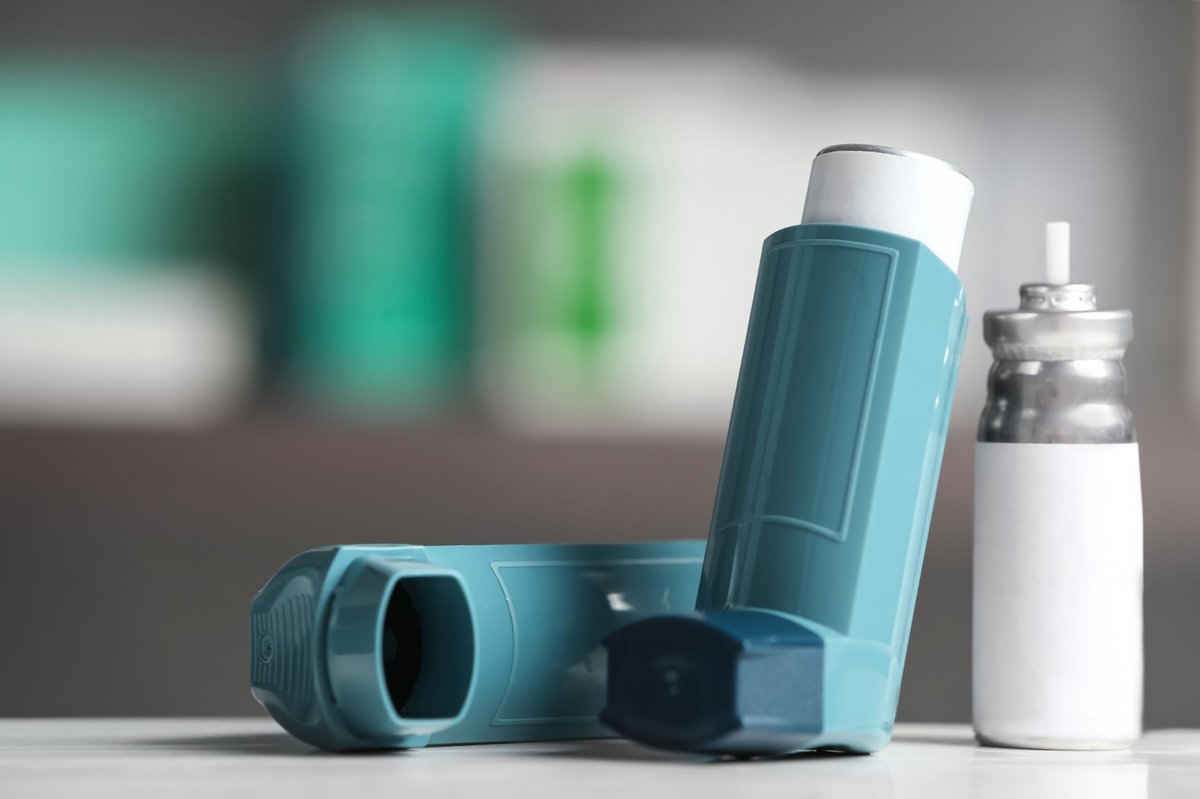Nicholas Panico, President Scientific and Regulatory Affairs, Symbio Proinnovera
Our skin is our body’s first line of defence against the elements, and as the world around us changes, for better or worse, so too does our dermatological health. For those suffering from eczema, or atopic dermatitis (AD), this skin barrier may not work as well as it should, leading to itching and inflammation that greatly impacts quality of life1. Recent studies have shown a steady increase in AD prevalence over the course of the last few decades, which has led to an increased burden of disease around the world2. This worldwide increase in AD may be due in part to changes in climate, air pollution, and exposure to irritants3. As these and other factors continue to worsen the global burden of AD, there is an increasing demand for efficacious and safe medical treatments.
As AD is not as easily visible or as dangerous as many other dermatological conditions, it is often overlooked. However, it is extremely common, affecting up to 1 in 6 children worldwide, and seriously impacting the lives of both patients and their families4. While the disease is most prevalent in children, up to 5% of adults have AD as well, either adult-onset or remaining from their childhood1. In recent years, greater emphasis has been placed on measuring patient Quality of Life (QoL), with tools such as the Dermatological Quality of Life Index (DLQI) often utilised in recent clinical trials. The most distressing AD symptom is pruritus, or itch; while itch may sound benign, constant scratching results in sleep disturbances in up to 60% of children, rising to 83% during AD flares. Children and adolescents with AD often suffer from physical and emotional fatigue due to constant sleep loss, which can cause or exacerbate mental illness4. The patient population continues to grow as well, with eczema prevalence increasing 0.98% per decade in adolescents and 1.21% per decade in adults in the last three decades2.
A potential cause of increasing AD prevalence around the globe is air pollution, and certain pollutants have been hypothesised to cause and exacerbate AD through immune, allergic, and inflammatory mechanisms. Suspected air pollutants include polycyclic aromatic hydrocarbons (PAHs), O3, SO2, CO, and NO2, amongst others. There are several theories for why these air pollutants can cause and worsen AD, with leading candidates being increases in oxidative stress within the upper layer of the skin, increased transepidermal water loss (TEWL), activation of the aryl hydrocarbon receptor (AhR) pathway, and inflammation through pro-inflammatory cytokines5. Several large studies have shown positive associations between exposure to common air pollutants and the prevalence of childhood AD3. While many countries are taking steps to combat air pollution, increased urbanisation in the coming decades6 may result in more children and adults being exposed to pollutants. While data is mixed, some studies show an increased AD prevalence among those living in urban areas, possibly due to closer proximity to pollutants3.
Along with typical air pollution from vehicles and power plants, climate change is causing acute air quality decreases through wildfires5 and longer pollination seasons. A study evaluating AD healthcare needs during the California Camp Fire wildfire found a marked increase in visits for AD and prescriptions for systemic AD medications in the region affected by the fire7. Wildfires produce combustion products such as CO, and fine particulate matter, particles less than 2.5 microns in diameter (PM2.5); both are associated with exacerbated AD in humans8. During the Quebec wildfires in 2023, dermatology clinics in Boston saw massive increases in AD related appointments, with eight times as many visits in June 2023 compared to June 20228 This increase in clinical burden persisted for the entire summer as the wildfires raged and atmospheric CO levels in Boston remained elevated8.
Another exacerbating factor expected to grow in severity is seasonal pollen; AD is often associated with asthma and allergic disease, and research shows that some AD patients experience significant flare-ups when exposed to pollen9. Recent research suggests that pollen season in North America has grown worse since 1990 due to human-driven climate change10, and that this trend is likely to continue in the future11.
As the global burden of AD increases, in part due to the environmental factors discussed, new and more effective treatments will become necessary. Slower moving and more constant trends, such as air pollution and urbanisation, will increase AD prevalence and intensify currently unmet clinical needs. Treatment options have expanded rapidly in the last decade, with the approval of Dupilumab for AD and the emergence of several JAK inhibitor drugs. While these therapies have greater safety and efficacy than their predecessors, they do not work for all patients, and are generally indicated for moderate to severe disease12. The increasing prevalence of AD will raise the demand for these drugs and increase the number of non-responders and partial-responders in the population.
Acute exposures to trigger irritants, such as wildfire smoke and high pollen concentrations, may increase the prevalence of AD flares in the future. Flare-ups are often difficult to manage, as they often require immediate therapy to provide symptom relief. In many cases, this comes in the form of a topical agent such as a corticosteroid or calcineurin inhibitor13. Biological agents, while effective, often take too long to work to be useful in flares. JAK inhibitors work quickly but are very expensive and are generally maintenance therapy for moderate to severe disease13. Maintenance therapy is long term treatment for AD that is consistently moderate to severe in severity and may not be as appropriate for flare-ups that are time limited due to an exacerbating event like a wildfire. Additionally, JAK inhibitors are contraindicated in elderly patients, those at risk of major cardiovascular events, smokers, and those at increased risk of cancer14. Environmental trends and events will continue to increase demand for a safe and fast-acting AD treatment that can reduce flare severity and relieve itch.
As we change our environment, our environment will continue to change us, and intensify existing unmet needs in AD treatment. New therapies that are cheap, safe, and effective at reducing flare-up intensity will be necessary to combat this trend and provide relief to patients.
References
(1) Kim, B. E.; Leung, D. Y. M. Significance of Skin Barrier Dysfunction in Atopic Dermatitis. Allergy Asthma Immunol Res 2018, 10 (3), 207-215. From NLM.
(2) Langan, S. M.; Mulick, A. R.; Rutter, C. E.; Silverwood, Richard J.; Asher, I.; García-Marcos, L.; Ellwood, E.; Bissell, K.; Chiang, C.-Y.; Sony, A. E.; et al. Trends in eczema prevalence in children and adolescents: A Global Asthma Network Phase I Study. Clinical & Experimental Allergy 2023, 53 (3), 337-352. DOI: https://doi.org/10.1111/cea.14276 (accessed 2024/01/09).
(3) Kantor, R.; Silverberg, J. I. Environmental risk factors and their role in the management of atopic dermatitis. Expert Rev Clin Immunol 2017, 13 (1), 15-26. DOI: 10.1080/1744666X.2016.1212660 From NLM Medline.
(4) Na, C. H.; Chung, J.; Simpson, E. L. Quality of Life and Disease Impact of Atopic Dermatitis and Psoriasis on Children and Their Families. Children (Basel) 2019, 6 (12). From NLM.
(5) Fadadu, R. P.; Abuabara, K.; Balmes, J. R.; Hanifin, J. M.; Wei, M. L. Air Pollution and Atopic Dermatitis, from Molecular Mechanisms to Population-Level Evidence: A Review. Int J Environ Res Public Health 2023, 20 (3). DOI: 10.3390/ijerph20032526 From NLM Medline.
(6) Kuddus, M. A.; Tynan, E.; McBryde, E. Urbanization: a problem for the rich and the poor? Public Health Reviews 2020, 41 (1), 1. DOI: 10.1186/s40985-019-0116-0.
(7) Fadadu, R. P.; Grimes, B.; Jewell, N. P.; Vargo, J.; Young, A. T.; Abuabara, K.; Balmes, J. R.; Wei, M. L. Association of Wildfire Air Pollution and Health Care Use for Atopic Dermatitis and Itch. JAMA Dermatol 2021, 157 (6), 658-666. From NLM.
(8) Santiago Mangual, K. P.; Ferree, S.; Murase, J. E.; Kourosh, A. S. The Burden of Air Pollution on Skin Health: a Brief Report and Call to Action. Dermatol Ther (Heidelb) 2024, 14 (1), 251-259. DOI: 10.1007/s13555-023-01080-1 From NLM PubMed-not-MEDLINE.
(9) Werfel, T.; Heratizadeh, A.; Niebuhr, M.; Kapp, A.; Roesner, L. M.; Karch, A.; Erpenbeck, V. J.; Losche, C.; Jung, T.; Krug, N.; et al. Exacerbation of atopic dermatitis on grass pollen exposure in an environmental challenge chamber. J Allergy Clin Immunol 2015, 136 (1), 96-103 e109. DOI: 10.1016/j.jaci.2015.04.015 From NLM Medline.
(10) Anderegg, W. R. L.; Abatzoglou, J. T.; Anderegg, L. D. L.; Bielory, L.; Kinney, P. L.; Ziska, L. Anthropogenic climate change is worsening North American pollen seasons. Proc Natl Acad Sci U S A 2021, 118 (7). DOI: 10.1073/pnas.2013284118 From NLM Medline.
(11) Zhang, Y.; Steiner, A. L. Projected climate-driven changes in pollen emission season length and magnitude over the continental United States. Nat Commun 2022, 13 (1), 1234. DOI: 10.1038/s41467-022-28764-0 From NLM Medline.
(12) Lobefaro, F.; Gualdi, G.; Di Nuzzo, S.; Amerio, P. Atopic Dermatitis: Clinical Aspects and Unmet Needs. Biomedicines 2022, 10 (11). From NLM.
(13) Girolomoni, G.; Busà, V. M. Flare management in atopic dermatitis: from definition to treatment. Ther Adv Chronic Dis 2022, 13, 20406223211066728. From NLM.
(14) Iznardo, H.; Roé, E.; Serra-Baldrich, E.; Puig, L. Efficacy and Safety of JAK1 Inhibitor Abrocitinib in Atopic Dermatitis. Pharmaceutics 2023, 15 (2). From NLM.





